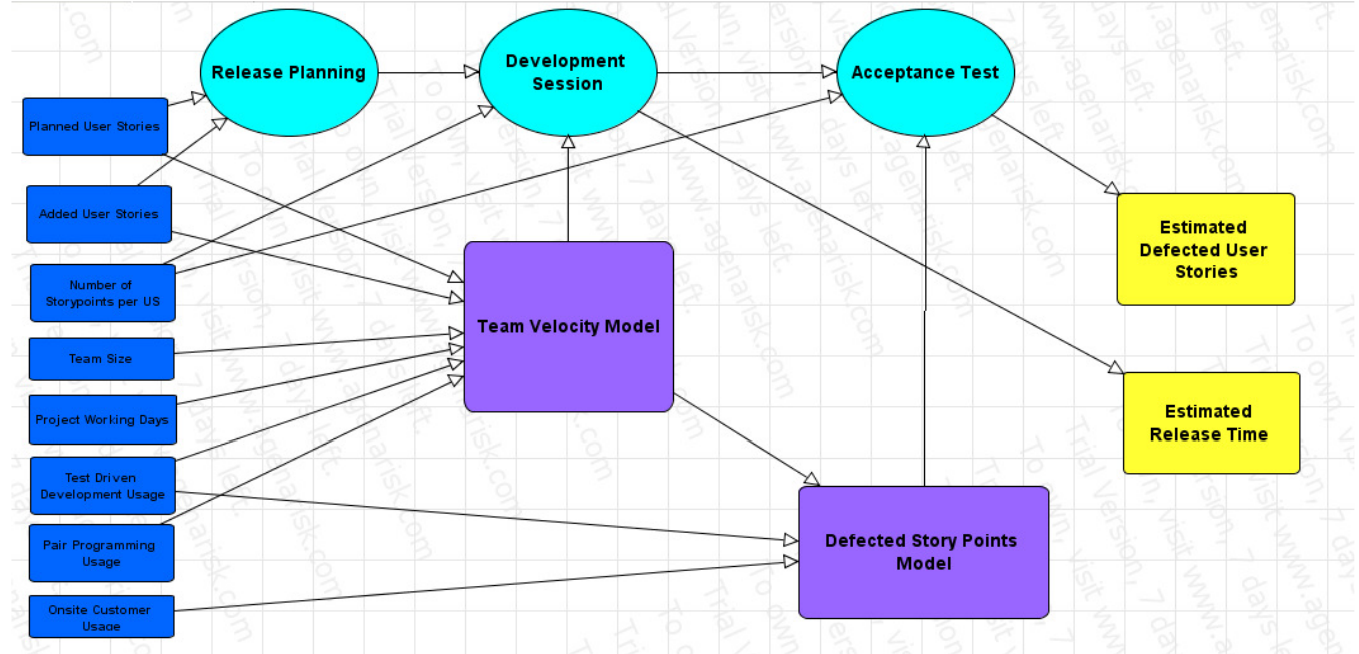Table of Links
-
Background and 2.1. Related Work
2.2. The Impact of XP Practices on Software Productivity and Quality
3.1. Model Overview
Figure 3 shows the based components of the proposed model. The model comprises eight input parameters, two estimated output parameters, and two internal models. According to the input parameters values, with the aid of the two internal models, the values of the output parameters (Estimated Release Time and Estimated defected User Stories) can be predicted. In addition, the model considers three XP basic activities: Release Planning, Development Session and Acceptance Test Activities (shown in the elliptical shape). For simplicity, the model assumes the following assumptions:
-
Defects are only found at the acceptance test phase.
-
The defects are modelled as story points to be treated in the next release.
-
The number of defects is affected by Test Driven Development and On site customer Practices.
-
The developer velocity increases as the project goes on.
-
The estimated release time is calculated as the time of the development session activity only ignoring the release plan and acceptance test times.
-
The team velocity is affected by the team size, team experience, Pair Programming Practice, and Test Driven Development Practice.

Model Input Parameters
Eight parameters were considered as input parameters to the release model:
-
Planned User Stories: The number of user stories to be developed in this release. This number should be available before the beginning of the release.
-
Added User Stories: The number of user stories to be added from the previous release due to the defects in the previous release.
-
Average number of Story Points per User Story: This number is an estimate number. It can be calculated as an average of the previous releases and similar projects.
-
Team Size: The number of developers in the development team.
-
Project Working Days: The summation of the estimated release days over all previous releases.
-
Pair Programming usage: a scale of 5 levels describing at what extend the team adopts the Pair programming practice is used for measuring. A mapping for the scale to a percentage is done according to table 1.
-
Test Driven Development usage: The same five levels scale is used to describe at what extend the team adopt the Test Driven Development practice.
-
On Site Customer usage: The same five levels scale is used to describe at what extend the team adopt the Onsite Customer practice.

According to the input parameters values, with the aid of team Velocity and defected story points Models, the values of the output parameters (Estimated Release Time and Estimated defected User Stories) can be predicted. Those values are feed as an input to the next release. The details of the team Velocity and defected story points Models will be provided in the next section.
The three basic activities of XP release: Release Planning, Development Session and Acceptance Test are shown in the elliptical shape. In the Release Planning phase, the user stories are sorted according to the importance and the release user stories are selected among them. The development session includes the basic development activities: simple design, coding and unit testing activities. Finally, the release testing activity is done in the Acceptance Test phase.
Authors:
(1) Mohamed Abouelelam, Software System Engineering, University of Regina, Regina, Canada;
(2) Luigi Benedicenti, Software System Engineering, University of Regina, Regina, Canada.
This paper is

